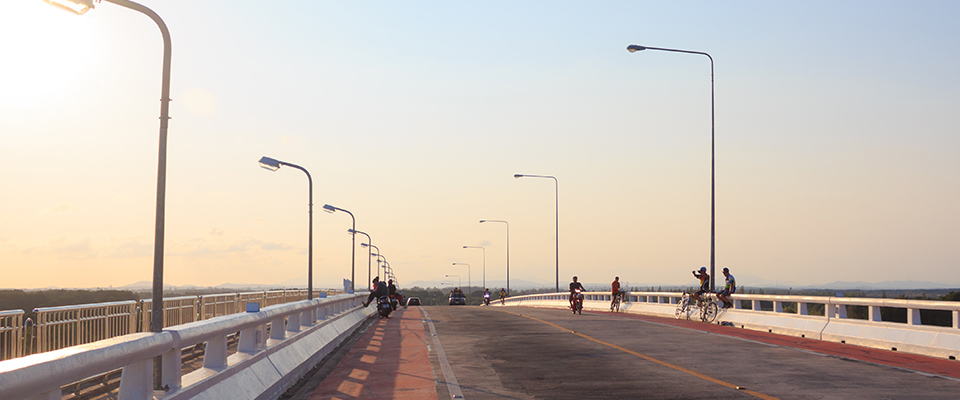
which material works best?
Aluminum is naturally more corrosion-resistant than steel. Thus, aluminum poles have the potential to wear better over time, costing less to maintain. However, aluminum isn’t the strongest material, which means those poles aren’t ideal for projects in areas susceptible to high winds or those with heavy loads.
Steel poles are sturdier and can easily hold heavier loads from fixtures, brackets, banners, and accessories. However, steel poles will eventually rust over time, which means they may incur higher maintenance costs. The average lifespan of a steel pole is 15-30 years, depending on the natural environment and how the pole is finished.
Fiberglass (a.k.a. composite) poles are becoming a more compelling option in commercial, public, and utility spaces. Lightweight, easy-to-install, and durable, composite structures can last 60-80 years and offer lower installation and maintenance costs.
yes, aesthetics ARE important
It’s a good idea to note not only the engineering requirements but also the style of your project area, and then choose poles that complement both. If your project site is fairly new, you may have a little more wiggle room in pole styles, which can help shape the overall look of the area.
how tall should you go?
The height of your poles should be dictated by the amount of light required for both safety and the desired aesthetics. The shorter your pole, the more direct and concentrated the lighting at ground level. For comparison, large parking lots typically use 25-foot poles to provide lots of light, while sports field lighting often starts at 40 feet (and higher) to provide adequate light without blinding spectators and players. Lighting surveys are usually conducted to determine the ideal mounting height, fixture configurations, and pole quantity for a particular area.
setting a good foundation
Here’s a good rule of thumb for sizing your concrete footing for a pole under 18 feet: 3 feet down x 4 feet wide. Then, add 1 foot in both directions for every 5 feet above that height. Always check local codes and concrete recommendations before starting your project.
the finishing touches
Your light poles are an investment, so remember to choose a durable finish to protect them. It’s important to consider the project area’s range of weather conditions to determine the best finish. At United Lighting Standards, we provide a variety of finish options, including powder coating, galvanizing, and anodizing.
Read about our Finish Warranties
View the Benefits of the Powder Coat Finish
what other details are there?
Other lighting options include brackets, vibration dampeners, couplings, and festoons.
Start by determining the number and style of brackets you need.
Vibration dampeners can be useful in mitigating the effects of strong winds, especially when Aeolian vibration may be an issue or when cameras or sensors are mounted to a pole. Couplings allow for easy installation of camera or speaker mounting plates or conduit access. Festoons are provided to accommodate GFI receptacles or light switches.
Need help shopping for light poles? Talk with Teresa.





